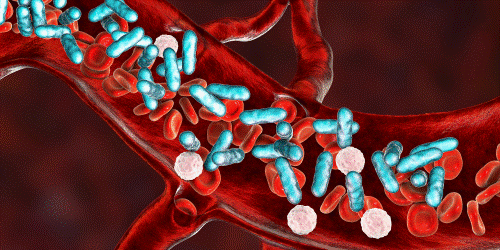
Shutterstock
Authors:
Michael Jay Katz, MD, PhD
Tracey Long, PhD, RN, APRN
JoAnn O’Toole, RN, BSN
Contact hours: 5
AOTA CEUs: 0.5
Expiration date: June 1, 2026
Course price: $29*
*Register or login when you reach the last chapter.
Course Summary
This course provides you with a thorough examination of the epidemiology and pathophysiology of sepsis. It covers diagnosis of sepsis and septic shock. It describes treatment strategies, supportive therapy, and other treatment considerations. It also discusses key elements of the Surviving Sepsis Campaign.
For Mail Order
To register and pay via U.S. mail, please download the PDF below and follow the written instructions.
![]() Sepsis: Immune Response Meltdown
Sepsis: Immune Response Meltdown
Target Audience
Nurses, nurse practitioners, advanced practice nurses, physical therapists, physical therapy assistants, occupational therapists and occupational therapy assistants*.
*If you are an OT or OTA, you may need the following information for relicensure:
![]() ATrain Education is an AOTA Approved Provider of professional development. Approved provider #6558. This distance learning-independent is offered at 0.5 CEUs, introductory, Foundational Knowledge. The assignment of AOTA CEUs does not imply endorsement of specific course content, products, or clinical procedures by AOTA.
ATrain Education is an AOTA Approved Provider of professional development. Approved provider #6558. This distance learning-independent is offered at 0.5 CEUs, introductory, Foundational Knowledge. The assignment of AOTA CEUs does not imply endorsement of specific course content, products, or clinical procedures by AOTA.
Criteria for Successful Completion
Study the course material, achieve a score of 80% or higher on the post test (the post test can be repeated if a learner scores less than 80%), complete the course evaluation, and pay where required. No partial credit will be awarded.
Accreditation
To find specific accreditations or approvals, click here.
Conflict of Interest/Commercial Support Disclosure
The planners and authors of this learning activity have declared no conflicts of interest, vested interest, or financial relationship that may influence the content of this activity. All information is provided fairly and without bias.
ATrain Education, Inc. received no outside financial or commercial support in the preparation, presentation or implementation of this learning activity and has no affiliation with any company whose products or services are mentioned in this activity.
Course Objectives
When you finish this course you will be able to*:
- Explain the pathophysiology of sepsis.
- Define sepsis, severe sepsis, and septic shock.
- Identify 3 groups of people with the highest risk of developing sepsis.
- Summarize 3 important components of the body's response to infection during a septic reaction.
- Name 3 important diagnostic signs and laboratory values of sepsis.
- Discuss the clinical presentation of septic shock.
- Explain the 3-hour and 6-hour bundles associated with treatment of sepsis.
- Name 2 elements of supportive therapy in severe sepsis.
- Identify 5 predictive risk factors for increased mortality from sepsis.
- Explain the scoring system for determining a prognosis in sepsis.
- Discuss prevention approaches to sepsis.
- Explain the patient experience with sepsis and care measures.
*Please note: attainment of course objectives will be assessed in the course evaluation.
